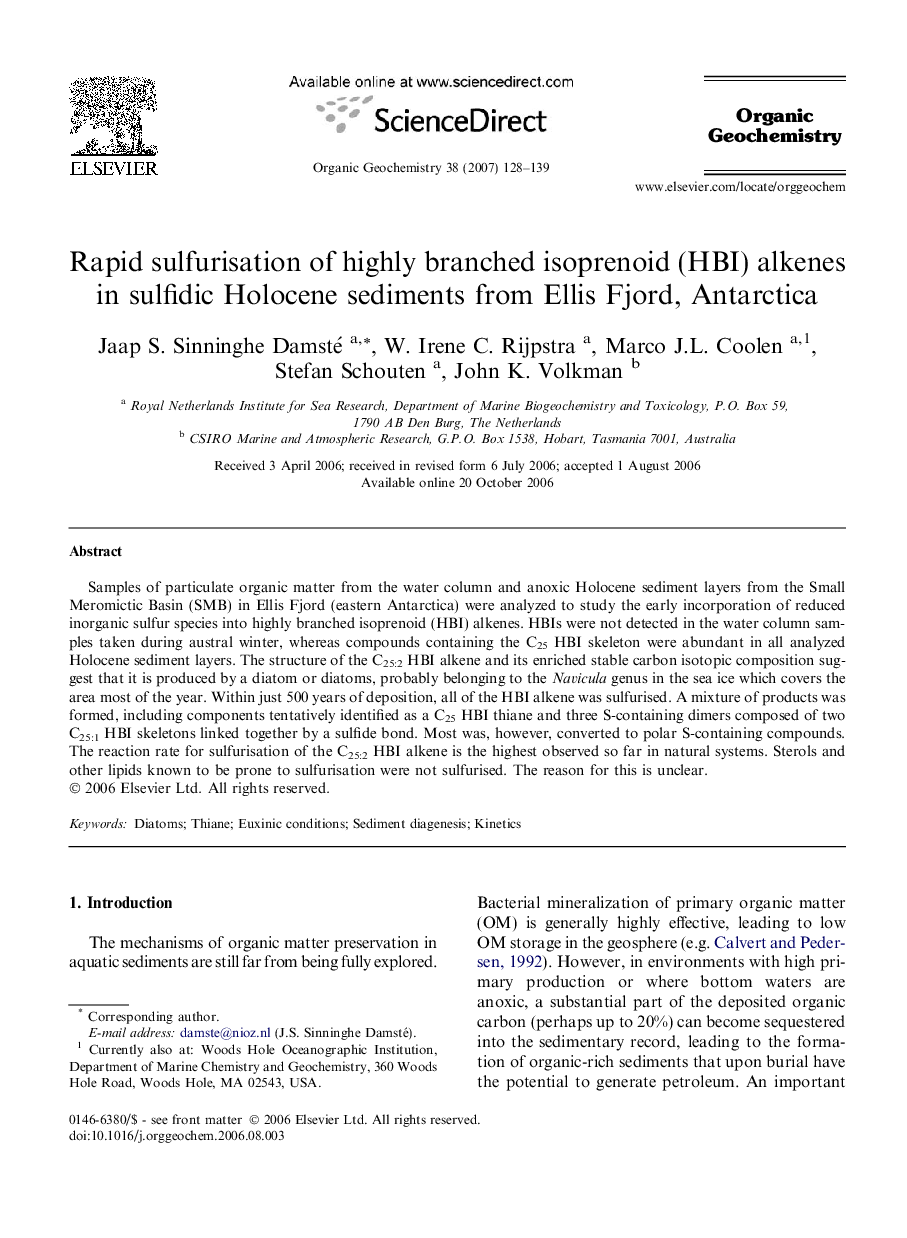| Article ID | Journal | Published Year | Pages | File Type |
|---|---|---|---|---|
| 5162120 | Organic Geochemistry | 2007 | 12 Pages |
Abstract
Samples of particulate organic matter from the water column and anoxic Holocene sediment layers from the Small Meromictic Basin (SMB) in Ellis Fjord (eastern Antarctica) were analyzed to study the early incorporation of reduced inorganic sulfur species into highly branched isoprenoid (HBI) alkenes. HBIs were not detected in the water column samples taken during austral winter, whereas compounds containing the C25 HBI skeleton were abundant in all analyzed Holocene sediment layers. The structure of the C25:2 HBI alkene and its enriched stable carbon isotopic composition suggest that it is produced by a diatom or diatoms, probably belonging to the Navicula genus in the sea ice which covers the area most of the year. Within just 500 years of deposition, all of the HBI alkene was sulfurised. A mixture of products was formed, including components tentatively identified as a C25 HBI thiane and three S-containing dimers composed of two C25:1 HBI skeletons linked together by a sulfide bond. Most was, however, converted to polar S-containing compounds. The reaction rate for sulfurisation of the C25:2 HBI alkene is the highest observed so far in natural systems. Sterols and other lipids known to be prone to sulfurisation were not sulfurised. The reason for this is unclear.
Keywords
Related Topics
Physical Sciences and Engineering
Chemistry
Organic Chemistry
Authors
Jaap S. Sinninghe Damsté, W. Irene C. Rijpstra, Marco J.L. Coolen, Stefan Schouten, John K. Volkman,
